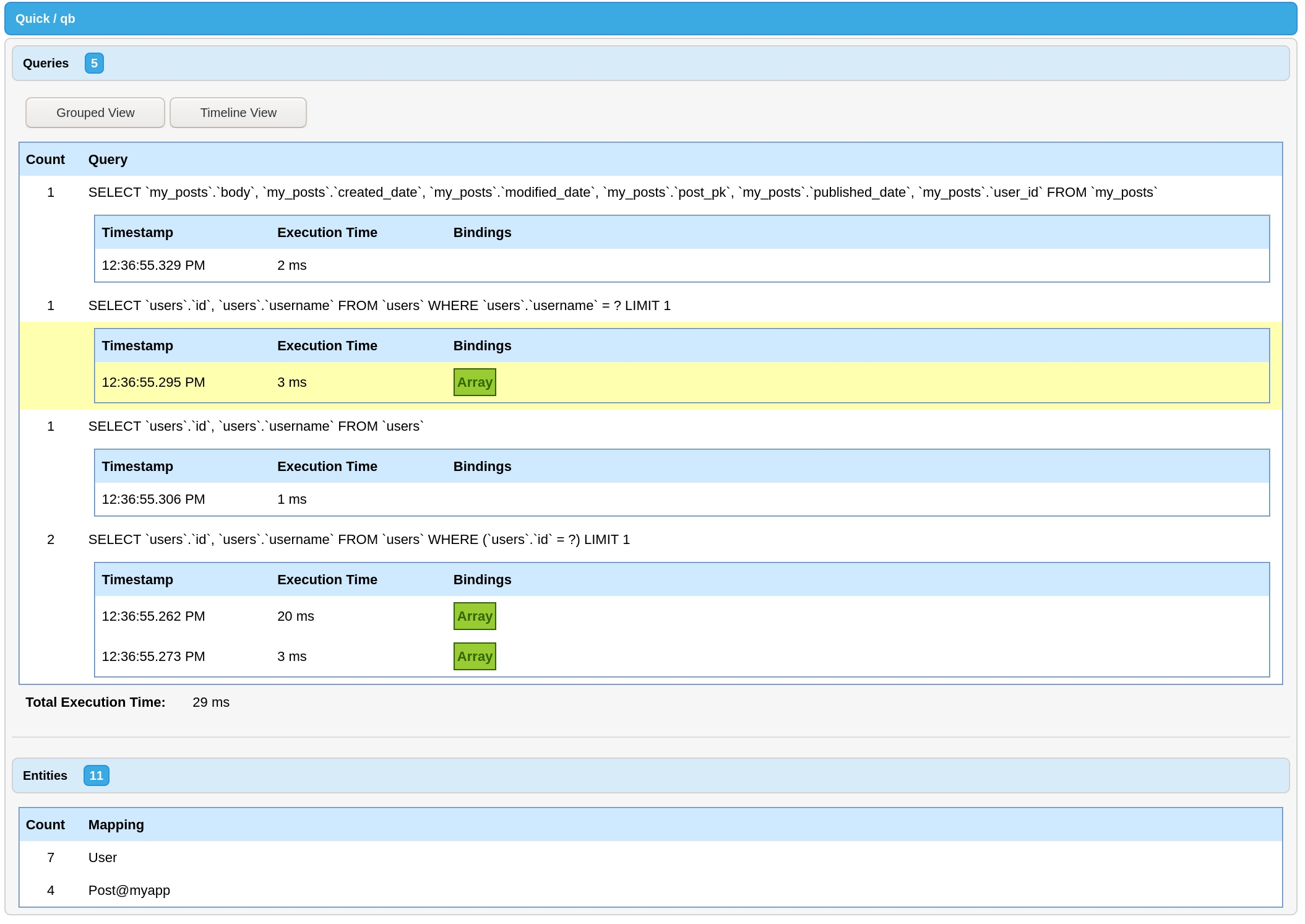Debugging
Debugging a Single Query
toSQL
Name
Type
Required
Default
Description
showBindings
boolean | string
false
false
If true, the bindings for the query will be substituted back in where the question marks (?) appear as cfqueryparam structs. If inline, the binding value will be substituted back creating a query that can be copy and pasted to run in a SQL client.
Returns the SQL that would be executed for the current query.
var userQuery = getInstance( "User" )
.where( "active", "=", 1 );
writeOutput( userQuery.toSQL() );SELECT `users`.`id`, `users`.`username` /* etc */
FROM "users"
WHERE "active" = ?The bindings for the query are represented by question marks (?) just as when using queryExecute. qb can replace each question mark with the corresponding cfqueryparam-compatible struct by passing showBindings = true to the method.
var userQuery = getInstance( "User" )
.where( "active", "=", 1 );
writeOutput( userQuery.toSQL( showBindings = true ) );SELECT `users`.`id`, `users`.`username` /* etc */
FROM "users"
WHERE "active" = {"value":1,"cfsqltype":"CF_SQL_NUMERIC","null":false}tap
Name
Type
Required
Default
Description
callback
Function
true
A function to execute with an instance of the current entity.
Executes a callback with the current entity passed to it. The return value from tap is ignored and the current entity is returned.
While not strictly a debugging method, tap makes it easy to see the changes to an entity after each call without introducing temporary variables.
dump
Name
Type
Required
Default
Description
showBindings
boolean | string
false
false
If true, the bindings for the query will be substituted back in where the question marks (?) appear as cfqueryparam structs. If inline, the binding value will be substituted back creating a query that can be copy and pasted to run in a SQL client.
A shortcut for the most common use case of tap. This forwards on the SQL for the current query to writeDump. You can pass along any writeDump argument to dump and it will be forward on. Additionally, the showBindings argument will be forwarded on to the toSQL call.
Debugging All Queries
cbDebugger
Starting in cbDebugger 2.0.0 you can view all your Quick and qb queries for a request. This is the same output as using qb standalone. This is enabled by default if you have qb installed. Make sure your debug output is configured correctly and scroll to the bottom of the page to find the debug output.
Additionally, with Quick installed you will see number of loaded entities for the request. This can help identify places that are missing pagination or relationships that could be tuned or converted to a subselect.

LogBox Appender
Quick is set to log all queries to a debug log out of the box via qb. To enable this behavior, configure LogBox to allow debug logging from qb's grammar classes.
Interception Points
ColdBox Interception Points can also be used for logging, though you may find it easier to use LogBox. See the documentation for qb's Interception Points or Quick's own interception points for more information.
Was this helpful?